Christmas is near; 2020 is ending; with corona virus turning our lives down and no solid sign of vaccines; world was still for months and we were packed inside our houses. The one thing that was evolving everyday were the chemistry labs and innovations which will redefine the coming decade ahead. Whether they be biochemistry, material science, nanochemistry or the latest one, quantum chemistry; many new technologies and sciences has and will change both humans and the way we live. Here are the top innovations 2020 in chemistry hand-picked from all over the world.
(Spoiler: There are some Christmas Greetings at the end of article…)
1. Senolytics – The Anti-Aging Drug
Aging is one such phenomenon defined as progressive decrease in physiological function accompanied with steady increase in mortality rate. None of us want to be look aged, dull, house of diseases and lying on bed waiting for death. It is not just this, but aging leads to many chronic diseases and becomes root cause of many disorders and amongst them; the fundamental mechanisms which cause aging is cellular senescence.

(image: The Wall Street Journal)
Cellular Senescence & Senolytics
Cellular Senescence is a major contributor to age-related dysfunction and multiple diseases throughout one’s life span. So basically, when cells re hurt beyond repair, they enter a protective state known as senescence. In this state they cease to divide further into daughter cells. During this, cells begin a pre-programmed self-destruct sequence known as apoptosis. Thus, this prevents injured cells from spreading and doing damage to our body. But in some cases this doesn’t happen. Then these cells persist there as zombielike in our tissues and begin to harm other cells around them.
As older we get, the more senescent cells begin to build up and this is the fundamental cause of issues arising while aging. With aging, these cells accumulate and at etiological sites of multiple diseases which mostly lead to high rates of morbidity, mortality & health costs. Accumulation of senescent cells causes local and systematic inflammation, tissue destruction, immune system inhibition and stem cell dysfunction.
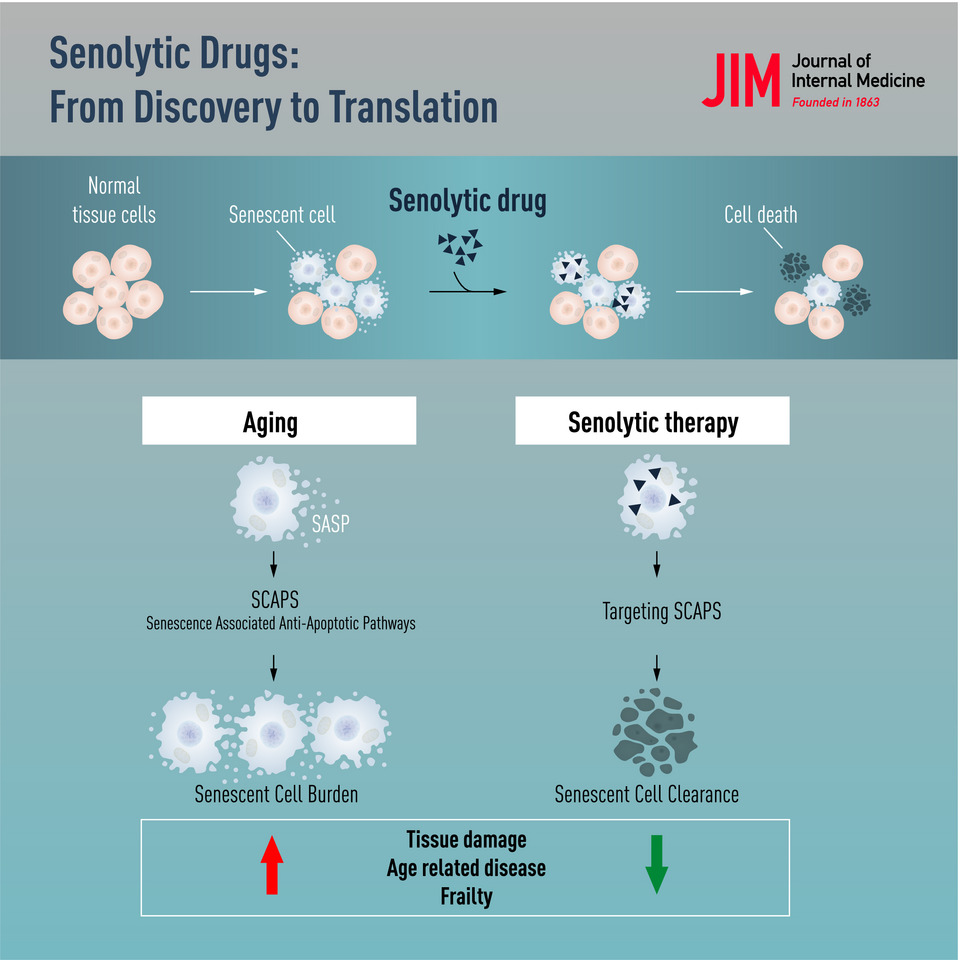
The discovery of Senolytic drugs that selectively eliminate these senescent cells, created a new route for alleviating age-related dysfunction and diseases.
The two Senolytic drugs identified by the scientist are called Dasatinib and Quercetin. Dasatinib was previously designed as cancer drug for use in humans and Quercetin is found naturally in some fruits and vegetables. Initially both were given to small group of diabetic kidney patients for three days and results indicated that there was decrease in number of senescent cells, in turn reducing aging.

(image: FEBSPRESS)
Also later on, another drug was discovered, called navitoclax; which also cleared senescent cells effectively and at the same time also helped to replenish stem cells that had undergone senescent. Thus, all three drugs potentially helped kill senescent cells and reduce aging along with generating new stem cells to help body remain as it is.
With Senolytics, one may enhance healthspan and delay, prevent or cure multiple chronic diseases; but still side effects, tolerability and safety of the drug should also be taken into consideration. Nevertheless Senolytics are not yet used on large-scale; but dream of staying young and anti-aging still prevails and can be fulfilled in near future.
2. 2022 Nano-Car Grand Prix: Revving the nano-engines
With motor sporting events like F1, adrenaline rush for racers and viewers is beyond imagination and now the Nanotechnology is here to increase that excitement. With advanced research in the science of single-molecule machines; the NanoCar lineup for 2022 International NanoCar Race is getting ready. This time; cars will be more advanced, more pumped up and most importantly faster than before.
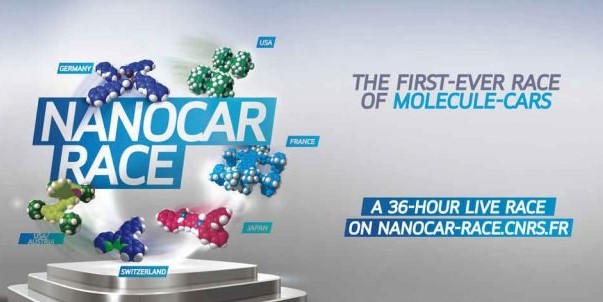
(image: The Truth About Cars)
This race is powered by some of the most amazing concepts of chemistry. The track course will be a surface of gold and all the teams will control their cars via internet on tracks under scanning-tunnelling microscope in their home labs. This year, cars will be more lighter and built with few more than 100 atoms as per new regulations. The track will be of 100-nanometers.
The Podium Finishers – All Set to Win
Talking about one of the winners of previous race, they stated that in 2020 they have constructed ultimate racing machine all set to win again. Their nanocar’s working is based on principle of multiple permanent dipole moments which make the cars more susceptible to being influenced by electric field gradients. They are also easily manoeuvrable and can be propelled along the course perfectly.
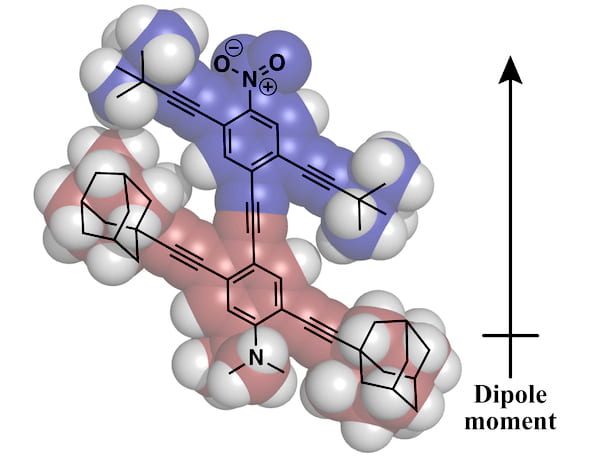
NanoCar Vehicle for 2022 Grand Prix
(image: RICE UNIVERSITY)
With 114 atoms, the new car’s wheels are of all tertiary-Butyl or all adamantyl or a combination of both. Ultimately, permanent dipoles are the one which increase the speed and drivability of the nanocar.
Purpose Behind NanoCar Races: Boom to Chemistry
Unlike F1, these are not just for adrenaline rush or earning money, but for the growth of nanotechnology, chemistry and biology all at the same time. The main aim for conducting the race is to advance the development of nanomachines capable of real work. One important application would be, to carry molecular scale cargo to target place inside our body under emergency conditions and help cure diseases faster and in more accurate way. Also, through this competition, worldwide expertise could be achieved and the entire field of “nanomanipulation” is encouraged to progress all the faster.
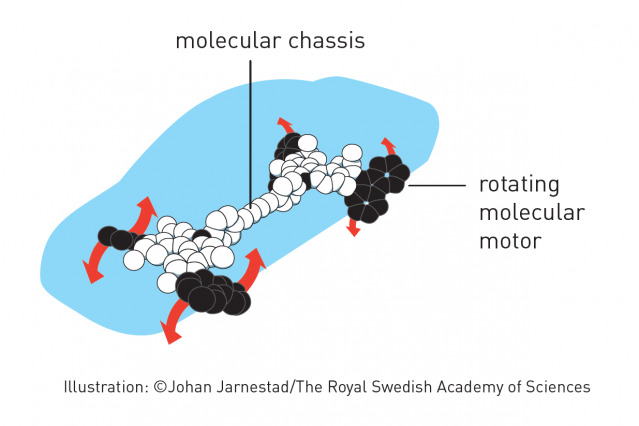
(image: ExtremeTech)
This could potentially bring new advancements in the research field of molecular motors that drill through cells to deliver drugs and in turn help humankind in becoming biochemically stronger than ever.
3. Quantum Thermometer: Newest Member of Quantum Technique
In day-to-day life, measuring temperature is pretty straightforward right? But at molecular or atomic levels – even the minute change in the temperature can exhibit large changes in the properties of materials or entire chemical reaction or rather sometimes destroy a super computer working on quantum principles. For the first time in history of quantum chemistry, scientists have now detected the smallest changes in temperature, at only tens of billionths of a degree above zero kelvin, which is absolutely critical.

(image: OIST)
The Importance in Chemistry
Temperature measurements are crucial for many experiments using ultracold atomic gases, for example when calibrating quantum simulators or when determining equations of state. Here, researchers have specifically measured the temperature of an ultracold Fermi Gas by observing the nonequilibrium dephasing dynamics of impurities immersed in it. Basically, Fermi Gas is an ensemble of fermions which do not interact with each other except for Pauli exclusion. Fermions are type of elementary particles; for quick understanding, electron is a fermion.
So here, researches have used a single supercooled atom as a thermometer; Yesss!! A single atomic thermometer. When added to the system, the thermometer atom exists in two different energy states at the same time – a unique, counter-intuitive property of quantum systems. As the atom reacts with ultracold gas, the quantum features of the combined energy states decay.
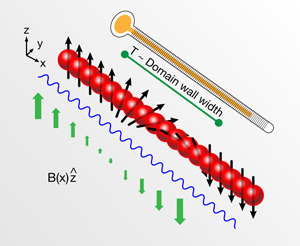
– directly proportional to –
temperature of ultracold gas
(image: APS Physics)
The rate at which the thermometer atom decays, is directly related to temperature of ultracold gas (increasing/decreasing). So, scientists have to measure the state in which thermometer atom is and they will know the temperature. The colder the gas, the slower the decay process is because then that slowly the atom will interact with the gas.
This new method of single supercooled atom thermometer has pushed the bounds of thermometry and reached new heights in chemistry while opening new paths in the further study of quantum physics and developing super computers even, in one or the other way.
These were the Best of 2020 in the field of chemistry; Senolytics, Nanocar Race & Quantum thermometer. While wrapping up the year, chemistry always is dangerous, unique, interesting and funny all at the same time.
So, lastly some X-Mas Greetings to all our readers from thehavok.com – in a chemical way…




